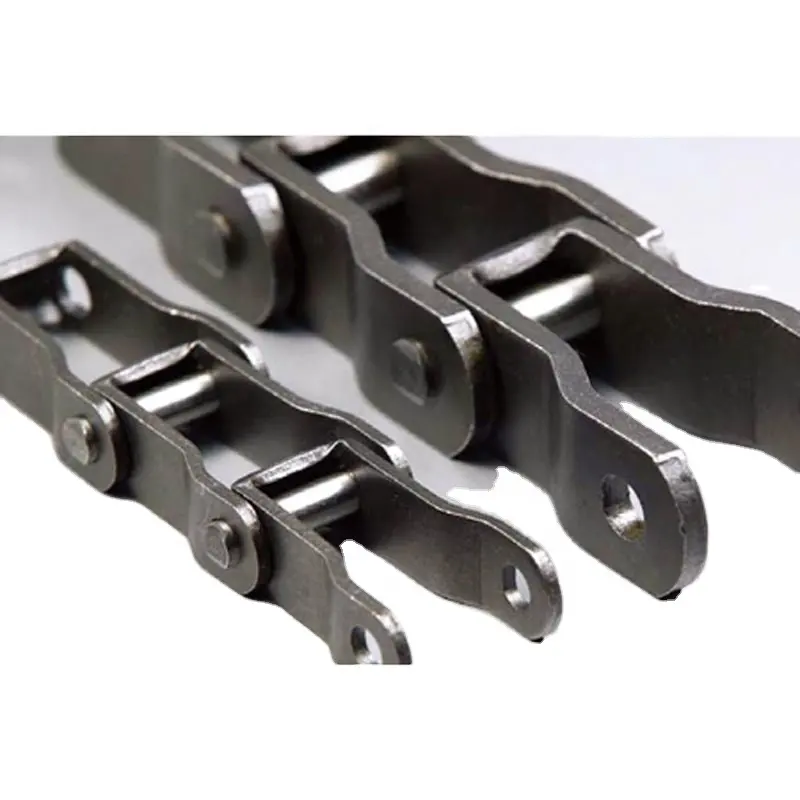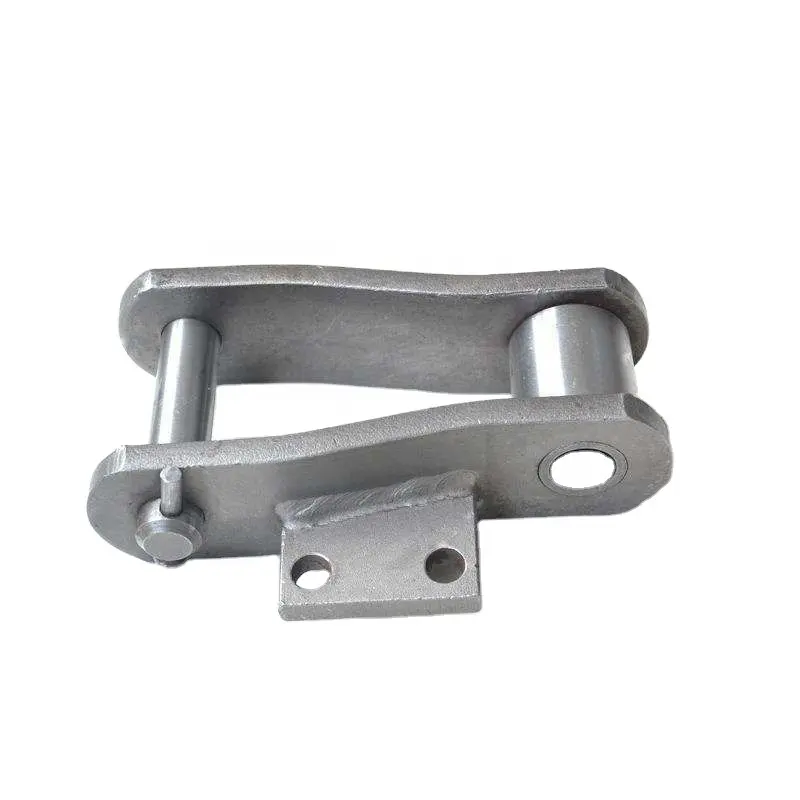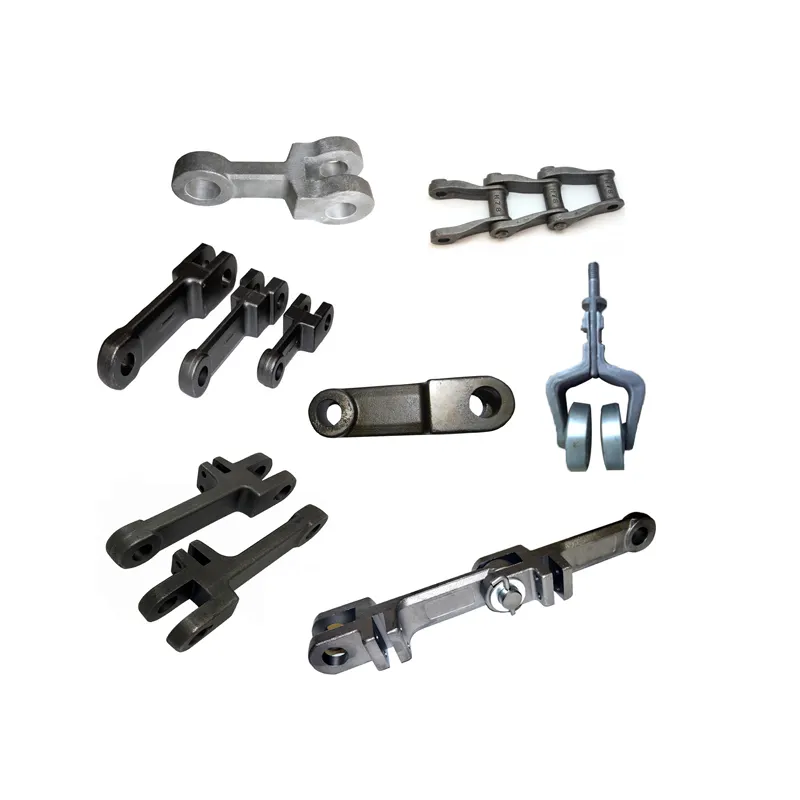Product Description
Steel Pintle Conveyor Chain With Attachment
AG Spreader, Grain Processing, Asphalt Paving, Sanding Truck Conveyor, Car Wash Conveyor, Forest Products
Model: 477,662,667X,667H,667J,667K,88K,D205,662H,667HX,D88C
Pack Detail:
Choose TAI
1. TAI with sophisticated CNC equipment, advanced technology and perfect inspection equipment produce all kinds of chains, sprockets and other transmission equipments which can make the customers’ trust. The company since its establishment has passed ISO9001 and other certifications.
2. “High quality, high benefit, high standards” to sing more integrated into the world. Adhering to the “good faith service to customers” purposes, from being in order to after-sales service, each bit closely link, TAI will provide the most intimate, comprehensive service.
3. “Meet the customers’ requirement, until customers’ satisfaction” is our goal from start to finish, better innovation and better cooperation can create better TAI to service the world. Let us work together, to create a better future with each other.
Welcome contact for more details.
| Chain No | Pitch | Ultimate tensile strength | Weight |
| mm | KN | kg/m | |
| 205 | 31.75 | 12.5 | 0.58 |
| 662 | 42.27 | 37.8 | 1.6 |
| 667X | 57.15 | 66.7 | 3.13 |
| 667H | 58.75 | 42.26 | 1.7 |
| 667J | 57.15 | 62.28 | 2.7 |
| 667K | 57.15 | 108.99 | 3.94 |
| 667XH | 57.15 | 124.6 | 4.48 |
| 88K | 66.27 | 108.99 | 3.91 |
| 308C | 78.11 | 222.42 | 9.8 |
/* January 22, 2571 19:08:37 */!function(){function s(e,r){var a,o={};try{e&&e.split(“,”).forEach(function(e,t){e&&(a=e.match(/(.*?):(.*)$/))&&1
| Material: | Carbon Steel |
|---|---|
| Structure: | Welded Chain |
| Surface Treatment: | Polishing |
| Chain Size: | 1/2"*3/32" |
| Feature: | Heat Resistant |
| Structure (for Chain): | Pintle Chain |
| Customization: |
Available
| Customized Request |
|---|
How do pintle chains handle misalignment between sprockets?
Pintle chains are designed to handle a certain degree of misalignment between sprockets, providing some flexibility in their operation. The ability to handle misalignment is essential in many industrial applications, where perfect alignment between sprockets may be challenging to maintain due to various factors.
Flexibility and Articulation:
Pintle chains are constructed with interlocking link plates and pins, which allow for some articulation between the chain links. This design enables the chain to bend and flex as it moves around the sprockets, accommodating slight misalignments without causing undue stress on the chain.
Compensating for Misalignment:
When pintle chains encounter misalignment between sprockets, they can adjust their shape slightly to compensate for the deviation. This feature helps to reduce wear on the chain, sprockets, and other components of the power transmission system.
Tolerance Limits:
However, it’s essential to note that pintle chains have specific tolerance limits for misalignment. Excessive misalignment beyond these limits can lead to premature wear and failure of the chain. Therefore, proper alignment during installation and regular maintenance to check for alignment issues are necessary to ensure optimal performance and longevity of the chain.
Guidelines for Proper Alignment:
To achieve the best performance and avoid premature wear, consider the following guidelines for proper chain alignment:
- Make sure sprockets are precisely aligned on their respective shafts.
- Check that the shafts supporting the sprockets are parallel and at the correct distance apart.
- Use appropriate tools and measurements to verify sprocket alignment during installation.
- Regularly inspect and adjust sprocket alignment if misalignment issues arise during operation.
Benefits of Proper Alignment:
Properly aligned pintle chains offer several benefits:
- Reduced Wear: Proper alignment minimizes wear on the chain and sprockets, increasing their lifespan.
- Smooth Operation: Optimal alignment ensures smooth and reliable chain movement, reducing the risk of chain jamming or skipping.
- Improved Efficiency: Correct alignment contributes to the overall efficiency of the power transmission system, reducing energy losses and improving performance.
In summary, pintle chains can handle some misalignment between sprockets due to their flexible and articulating design. However, maintaining proper alignment within the recommended tolerance limits is crucial for ensuring the longevity and reliable performance of pintle chains in industrial applications.
What are the benefits of using a stainless steel pintle chain in specific environments?
Stainless steel pintle chains offer several advantages when used in specific environments that require corrosion resistance, sanitation, and durability. Some of the key benefits of using stainless steel pintle chains include:
- Corrosion Resistance: Stainless steel is highly resistant to corrosion, making it suitable for environments with high humidity, moisture, or exposure to chemicals. It prevents rusting and ensures the chain’s longevity even in harsh conditions.
- Sanitary: In industries such as food processing, pharmaceuticals, and medical devices, maintaining a hygienic environment is crucial. Stainless steel pintle chains are easy to clean and sanitize, meeting strict hygiene standards and reducing the risk of contamination.
- High Strength: Stainless steel has excellent strength and load-carrying capacity, making it suitable for heavy-duty applications in various industries.
- Temperature Resistance: Stainless steel pintle chains can withstand a wide range of temperatures, making them suitable for both high-temperature and low-temperature applications.
- Low Maintenance: Due to their corrosion resistance and durability, stainless steel pintle chains require less maintenance and have a longer service life compared to chains made from other materials.
- Chemical Resistance: Stainless steel is resistant to various chemicals, making it suitable for applications where the chain may come into contact with corrosive substances.
- Reliability: Stainless steel pintle chains maintain their performance and structural integrity even in challenging environments, providing a reliable conveyor solution for critical applications.
Stainless steel pintle chains are commonly used in industries such as food and beverage, pharmaceuticals, chemical processing, and outdoor applications where traditional carbon steel chains may not be suitable due to corrosion concerns. Their ability to withstand harsh environments while maintaining cleanliness and durability makes them a preferred choice in specific industries.
What are the maintenance requirements for pintle chains?
Maintaining pintle chains is essential to ensure their longevity and reliable performance. Here’s a more detailed explanation of the maintenance requirements:
Regular Lubrication:
Proper and regular lubrication is critical for pintle chains to reduce friction and wear between the pins, bushings, and rollers. Use a suitable lubricant that can withstand the operating conditions and temperature. Lubricate the chain at recommended intervals or as needed based on the manufacturer’s guidelines.
Inspection:
Regularly inspect the pintle chain for signs of wear, elongation, and damage. Look for excessive pin wear, loose or damaged attachments, and chain elongation. Address any issues immediately to prevent further damage and downtime.
Cleaning:
Keep the pintle chain clean and free from debris, dirt, and contaminants. Regularly clean the chain using a suitable cleaning agent or solvent to remove any buildup that may affect chain performance and longevity.
Adjustment:
Ensure the pintle chain is properly tensioned and adjusted to the correct slack. Excessive slack can lead to premature wear, while overtightening can cause additional stress on the chain components. Follow the manufacturer’s guidelines for proper tensioning and adjustment.
Replacement of Worn Parts:
If any components of the pintle chain are excessively worn or damaged beyond their useful life, such as pins, bushings, or rollers, replace them promptly with genuine replacement parts from the manufacturer.
Environment Considerations:
Consider the operating environment of the pintle chain. In corrosive or harsh environments, stainless steel or plastic pintle chains may be more suitable to reduce maintenance requirements related to corrosion.
Regular Maintenance Schedule:
Develop a regular maintenance schedule and follow it diligently. Document maintenance activities, including lubrication, inspections, and replacements, to track the chain’s condition and performance over time.
Operator Training:
Train operators and maintenance personnel on proper pintle chain maintenance procedures to ensure they are familiar with the maintenance requirements and best practices.
Conclusion:
Pintle chains require regular maintenance, including proper lubrication, inspection, cleaning, adjustment, and replacement of worn parts. Following a well-defined maintenance schedule and adhering to manufacturer’s guidelines will help extend the chain’s service life, reduce downtime, and ensure safe and efficient operation.
editor by CX 2024-04-04




